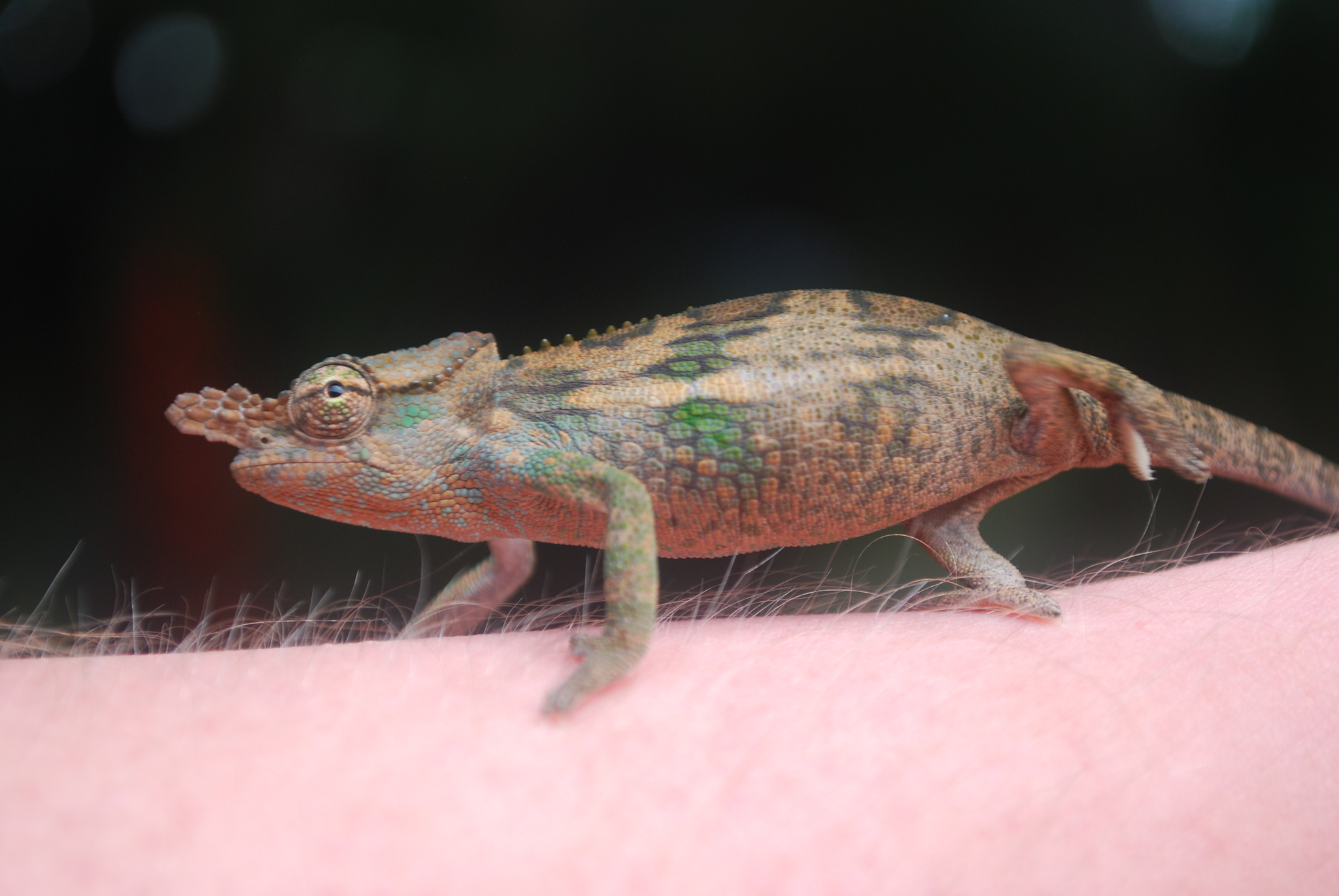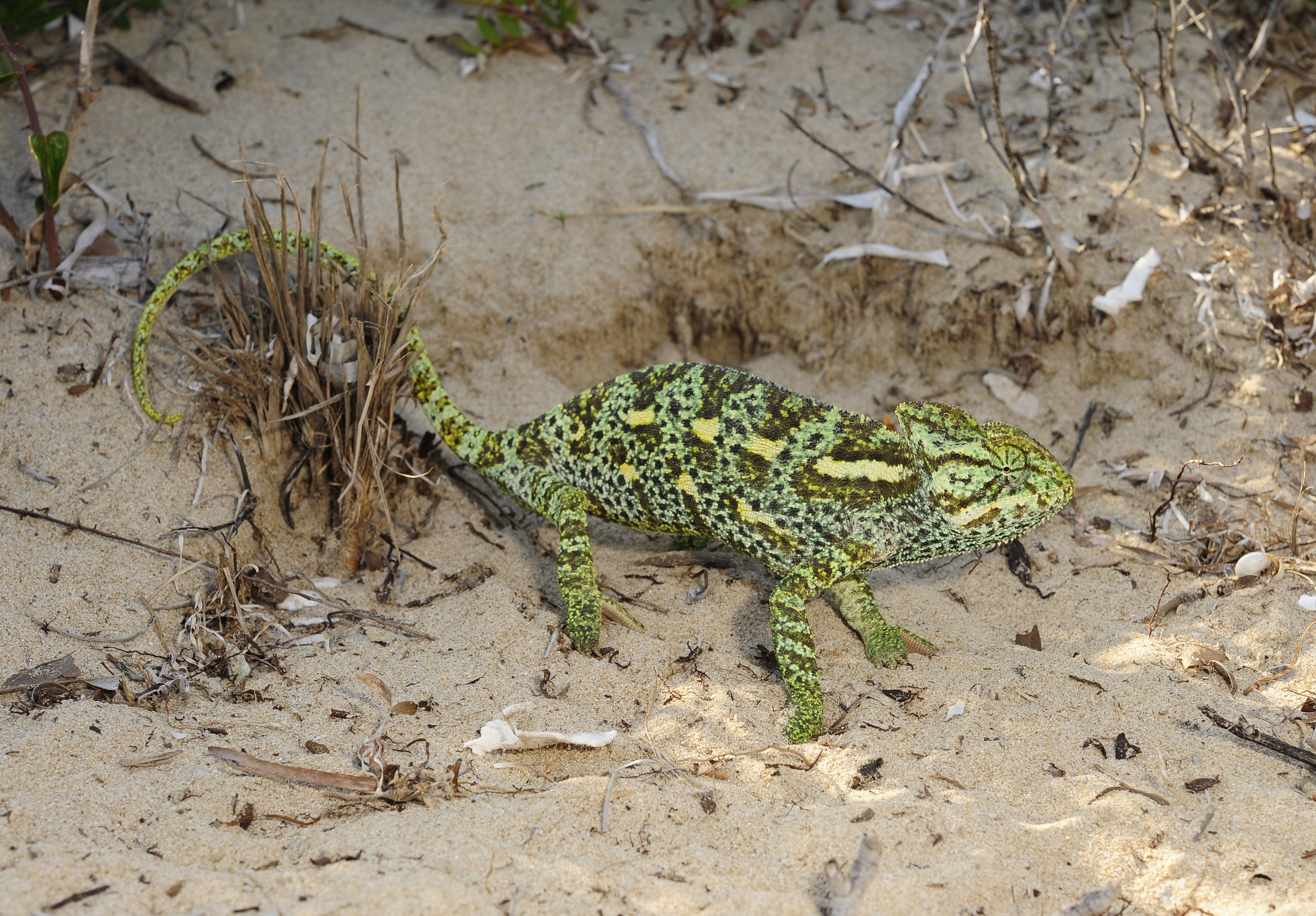|
Kinyongia
''Kinyongia'' (derived from the group's name in Kiswahili language) is a genus of chameleons found in montane and sub-montane areas in Kenya, Tanzania, Uganda, Rwanda, Burundi, and far eastern DR Congo. They are restricted to forests, woodlands and other wooded habitats, and many species have very small geographic ranges. In most species, at least the males have horns or knobs on their noses. (2006). "A review of the genus ''Bradypodion'' (Sauria: Chamaeleonidae), with the descriptions of two new genera". ''Zootaxa'' 1363: 23–38. As typical of most chameleons, ''Kinyongia'' are oviparous. They were initially placed in the genus ''Chamaeleo'' and by some authorities subsequently transferred into ''Bradypodion'', but in 2006 they were moved to their own genus, ''Kinyongia''. Species The following 23 species are recognized as being valid. www.reptile-database.org. ''Nota bene'': A Binomial nomenclature, binomial authority in parentheses indicates that the species was originally ... [...More Info...] [...Related Items...] OR: [Wikipedia] [Google] [Baidu] |
Kinyongia Fischeri
Fischer's chameleon (''Kinyongia fischeri)'', also known commonly as the Nguru blade-horned chameleon and the Nguru two-horned chameleon, is a species of chameleon, a lizard in the family Chamaeleonidae. The species is endemic to Tanzania. Etymology The specific name, ''fischeri'', is in honor of German herpetologist Johann Gustav Fischer. Beolens, Bo; Watkins, Michael; Grayson, Michael (2011). ''The Eponym Dictionary of Reptiles''. Baltimore: Johns Hopkins University Press. xiii + 296 pp. . (''Kinyongia fischeri'', p. 90). Geographic range ''K. fischeri'' is restricted to the Nguru and Nguu Mountains of Tanzania. Chameleons found in other parts of the Eastern Arc Mountains in Tanzania as well as Kenya are now classified as separate species.Lutzmann N (2008"Some important changes in the systematics of ''Bradypodion'' FITZINGER, 1843". ''Chameleons! Online E-Zine'' chameleonnews.com Habitat The preferred natural habitat of ''K. fischeri'' is forest, at altitudes up to . Ta ... [...More Info...] [...Related Items...] OR: [Wikipedia] [Google] [Baidu] |
Kinyongia Boehmei
''Kinyongia boehmei'', the Taita blade-horned chameleon, Böhme's two-horned chameleon and Dwarf fischer's chameleon, is species of chameleon, a lizard in the family Chamaeleonidae, found only in the Taita Hills of southeastern Kenya. It is the smallest species in the East African "two-horned chameleon" group and until 2008 it was generally considered a part of '' K. tavetana''. Taxonomy and etymology ''Kinyongia boehmei'' was first scientifically described in 2002, originally as a subspecies of ''K. tavetana''. In 2008, the taxonomy of the "two-horned chameleons" in Kenya and Tanzania was reviewed, which prior to the study only consisted of two recognized species, '' K. fischeri'' and ''K. tavetana''. It was shown that ''boehmei'' is sufficiently distinct from ''K. tavetana'' to be recognized as a separate species, although the two are sister species. The specific name, ''boehmei'', is in honor of German herpetologist Wolfgang Böhme. Beolens, Bo; Watkins, Michael; Grayson, M ... [...More Info...] [...Related Items...] OR: [Wikipedia] [Google] [Baidu] |
Kinyongia Matschiei
''Kinyongia matschiei'', common name giant monkey-tailed east Usambara two-horned chameleon, giant east Usambara blade-horned chameleon, and Matschie's two-horned chameleon, is a species of chameleon from the East Usambara Mountains in Tanzania. It was formerly confused with '' K. fischeri'', which is not found in the range of ''K. matschiei''.Mariaux J, Lutzmann N, Stipala J. 2008. The two-horned chamaeleons of East Africa. ''Zool. J. Linn. Soc.'' 152: 367-391. ''K. matschiei'' is the largest species in the genus ''Kinyongia'' at up to in total length, although the female remains smaller than the male at up to . The adult male has a long pair of "horns" on the nose, which can be parallel or divergent; they are much smaller in the female. Distribution This species lives only at altitudes of up to over a total of of isolated Afrotemperate forest areas in the East Usambara Mountains The Usambara Mountains of northeastern Tanzania in tropical East Africa, comprise the eas ... [...More Info...] [...Related Items...] OR: [Wikipedia] [Google] [Baidu] |
Kinyongia Carpenteri
''Kinyongia carpenteri'', commonly called Carpenter's chameleon or the helmeted chameleon, is a species of chameleon, a lizard in the family Chamaeleonidae. The species is native to central Africa. Geographic range ''K. carpenteri'' has a geographic range limited to the mountain highlands on the border between Uganda and the Democratic Republic of the Congo. Habitat The preferred natural habitat of ''K. carpenteri'' is forest, at altitudes of . Reproduction ''K. carpenteri'' is oviparous. Etymology The specific name, ''carpenteri'', honors the type specimen's collector, British physician and entomologist Geoffrey Douglas Hale Carpenter. Taxonomy Originally named in the genus ''Chamaeleo'', the species ''C. carpenteri'' was moved into the genus ''Bradypodion'' prior to its current classification. With the move into the genus ''Kinyongia'', the masculine ending to the specific epithets of other species in the genus needed to be modified to match the feminine Femininity ... [...More Info...] [...Related Items...] OR: [Wikipedia] [Google] [Baidu] |
Kinyongia Adolfifriderici
''Kinyongia adolfifriderici'' is a species of chameleon, a lizard in the family Chamaeleonidae. The species is native to central Africa and east Africa. Geographic range ''K. adolfifriderici'' is found in Burundi, northern and eastern Democratic Republic of the Congo, Rwanda, and Uganda. Common names Common names for ''K. adolfifriderici'' include the Ituri dwarf chameleon and the Ituri chameleon. Etymology The specific name ''adolfifriderici'' honours Duke Adolf Friedrich of Mecklenburg, leader of the German Central Africa Expedition in 1907–1908, Beolens, Bo; Watkins, Michael; Grayson, Michael (2011). ''The Eponym Dictionary of Reptiles''. Baltimore: Johns Hopkins University Press. xiii + 296 pp. . (''Kinyongia adolfifriderici'', p. 2). during which the types were collected. Habitat The preferred natural habitat of ''K. adolfifriderici'' is forest, at altitudes of . Reproduction ''K. adolfifriderici'' is oviparous Oviparous animals are animals that reproduce by depo ... [...More Info...] [...Related Items...] OR: [Wikipedia] [Google] [Baidu] |
Kinyongia Asheorum
''Kinyongia asheorum'', also known commonly as the Mount Nyiro bearded chameleon, is a species of lizard in the family Chamaeleonidae. The species is endemic to Kenya. Only four specimens are known. Etymology The specific name, ''asheorum'' (Latin, genitive, plural), is in honor of British-Kenyan herpetologist James Ashe (1925–2004), and his wife Sanda (1944–2018). Beolens, Bo; Watkins, Michael; Grayson, Michael (2011). ''The Eponym Dictionary of Reptiles''. Baltimore: Johns Hopkins University Press. xiii + 296 pp. . (''Kinyongia asheorum'', p. 12). Description ''K. asheorum'' is medium-sized, reaching a maximum size of about (of which about 60% is tail). It has a distinct head casque, a pointed snout, and two horns on the tip of the snout. It is uniformly dark green with several white spots and brownish ridges. Distribution and habitat ''K. asheorum'' is only known to occur on Mount Nyiro in Kenya, where it was collected in a single patch of forest at an altitude of . ... [...More Info...] [...Related Items...] OR: [Wikipedia] [Google] [Baidu] |
Kinyongia Excubitor
Mount Kenya sentinel chameleon, or Mount Kenya hornless chameleon (''Kinyongia excubitor''), is a species of chameleons endemic to Kenya. It is known from Mount Kenya Mount Kenya (Meru people, Meru: ''Kĩrĩmaara,'' Kikuyu people, Kikuyu: ''Kĩrĩnyaga'', Kamba language, Kamba: ''Ki nyaa'', Embu language, Embu: ''Kĩ nyaga'') is an extinct volcano in Kenya and the Highest mountain peaks of Africa, second-highe ..., Nyambeni Hills, and Aberdare Range. References Kinyongia Reptiles of Kenya Endemic fauna of Kenya Taxa named by Thomas Barbour Reptiles described in 1911 Vulnerable biota of Africa {{chameleon-stub ... [...More Info...] [...Related Items...] OR: [Wikipedia] [Google] [Baidu] |
Chameleon
Chameleons or chamaeleons (Family (biology), family Chamaeleonidae) are a distinctive and highly specialized clade of Old World lizards with 200 species described as of June 2015. The members of this Family (biology), family are best known for their distinct range of colours, being capable of colour-shifting camouflage. The large number of species in the family exhibit considerable variability in their capacity to change colour. For some, it is more of a shift of brightness (shades of brown); for others, a plethora of colour-combinations (reds, yellows, greens, blues) can be seen. Chameleons are also distinguished by their zygodactylous feet, their prehensility, prehensile tail, their laterally compressed bodies, their head casques, their projectile tongues used for catching prey, their swaying gait, and in some species crests or horns on their brow and snout. Chameleons' eyes are independently mobile, and because of this the chameleon’s brain is constantly analyzing two sepa ... [...More Info...] [...Related Items...] OR: [Wikipedia] [Google] [Baidu] |
Chamaeleo
''Chamaeleo'' is a genus of chameleons in the Family (biology), family Chamaeleonidae. Most species of the genus ''Chamaeleo'' are found in sub-Saharan Africa, but a few species are also present in northern Africa, southern Europe, and southern Asia east to India and Sri Lanka. Description Species in the genus ''Chamaeleo'' are slow moving, with independently movable eyes, the ability to change skin colouration, a long tongue, usually a prehensile tail, and special leg adaptations for grasping vegetation. Males are generally larger and more colorful than females. Almost all species have a maximum snout-vent length (SVL) between . Behavior The vast majority of ''Chamaeleo'' species are arboreal and typically found in trees or bushes, but a few species (notably the Namaqua Chameleon) are partially or largely Terrestrial animal, terrestrial. Reproduction The genus ''Chamaeleo'' includes only Oviparity, oviparous species. In captivity With few exceptions, the chameleons most commo ... [...More Info...] [...Related Items...] OR: [Wikipedia] [Google] [Baidu] |
Bradypodion
''Bradypodion'' (meaning "slow-footed" in Greek) is a genus of chameleons in the family Chamaeleonidae, collectively called South African dwarf chameleons. All species are found in South Africa and most are endemic to this country, but a few can also be found in Eswatini, Lesotho, southernmost Namibia and possibly southernmost Mozambique. They are quite small chameleons where the different species often can be difficult to separate by appearance, although exact location (each species tends to have a rather small distribution) and the intense breeding colours of males are useful for their identification. They are arboreal, but some species are mostly found low in the vegetation. ''Bradypodion'' feed on small invertebrates, especially insects. They rapidly reach sexual maturity, typically at an age between half a year and one year, but sometimes up to two years. Adult males are territorial. It is the only genus of chameleon where females of all species give birth to live youn ... [...More Info...] [...Related Items...] OR: [Wikipedia] [Google] [Baidu] |
Richard Sternfeld
Richard Sternfeld (8 February 1884, in Bielefeld – 1943 in Auschwitz) was a German-Jewish herpetologist, who was responsible for describing over forty species of amphibians and reptiles, particularly from Germany's African and Pacific colonies (i.e. modern-day Tanzania, Cameroon, Togo, Namibia and Papua New Guinea). Education Sternfeld was the son of a merchant in Bielefeld, North Rhine-Westphalia. He was educated in a local gymnasium and initially entered university in 1903 to study medicine at Freiburg, but he switched to studying natural science at Bonn. In 1907 he returned to Freiburg, to obtain his Dr. Phil., with a dissertation on the biology of mayflies under the guidance of evolutionary biologist August Weismann. Museum employment and First World War Sternfeld's first appointment was alongside herpetologist Gustav Tornier at the Zoological Museum at the University of Berlin. He worked on the herpetofaunas of the German colonies in Africa and the Sout ... [...More Info...] [...Related Items...] OR: [Wikipedia] [Google] [Baidu] |



